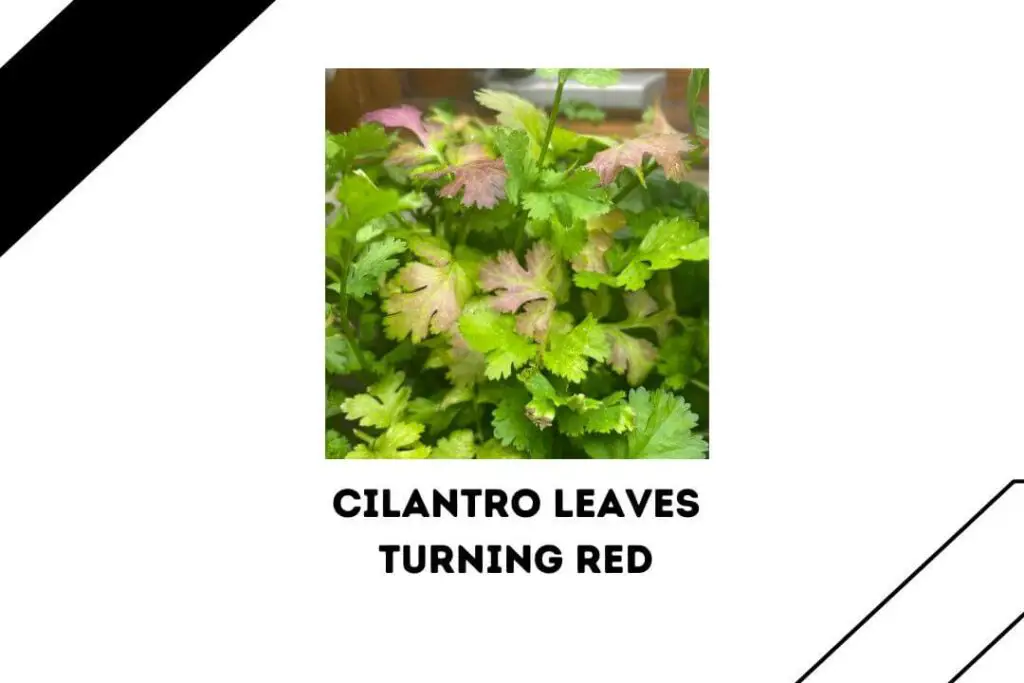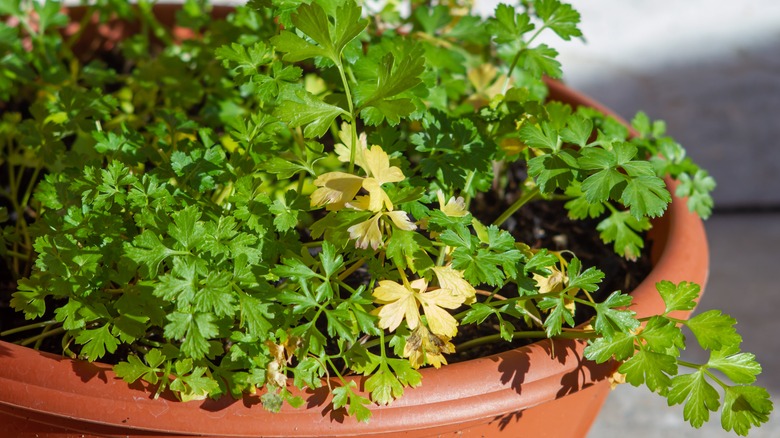Many foods around the world use cilantro as a main herb. But it can be hard to grow because even small changes in its environment can make it wilt and die. If your cilantro keeps dying, don’t give up! This article will talk about the most common reasons why cilantro plants die and give you ways to bring them back to life.
Overwatering
One of the most frequent causes of cilantro death is overwatering. Cilantro has a taproot system which pushes deep into the soil. If the soil remains soggy, the roots can’t get enough oxygen and will rot. Seedlings need more frequent watering, but established cilantro prefers drier soil between waterings.
Answer: Let the top inch or two of soil dry out between waterings. Press your finger into the soil to see how wet it is before you add more water. If you plant something in a pot, make sure the bottom has drainage holes. You could also add sand or perlite to help the water drain better.
Underwatering
While cilantro doesn’t like soggy soil, letting it completely dry out can also cause problems. If the soil dries out too much between waterings, the plant can wilt, turn brown, and die. This happens more frequently in hot weather or pots that are too small.
Solution: Water cilantro when the top of the soil feels dry to the touch, at least 1-2 inches down. During hot spells, it may need watering 2-3 times per week. Add mulch around the plants to retain moisture. Move potted plants to a shadier spot.
Poor Soil Conditions
Cilantro needs organic matter-rich soil that drains well. If the soil isn’t good enough, cilantro will wilt and die. It’s hard for roots to grow in heavy clay soil or very sandy soil.
Solution: Choose a spot with nutrient-rich loam or mix in several inches of compost or other organic material before planting. For pots, use a quality potting mix amended with compost.
Full Sun
Even though cilantro needs a lot of light, too much direct, hot sunlight can hurt the plant. In the summer, the hot afternoon sun can burn the leaves and make the plant wilt.
Solution: Plant cilantro in partial shade or areas with morning sun only. Add shade cloth over potted plants during extreme heat. Mist the leaves to cool the plant.
Extreme Temperatures
Cilantro thrives in cool conditions between 60-70°F. Temperatures much outside this range can cause problems. Sustained heat over 80°F leads to bolting and flower production instead of leaf growth.
Solution: Plant cilantro in the coolest part of your yard. Add mulch around the plants to moderate soil temperature. Move pots to a shady area during hot afternoons.
Improper Soil pH
Cilantro prefers a soil pH between 6.2-6.8. Too much alkalinity or acidity prevents the roots from properly absorbing nutrients, leading to weak, dying plants.
Solution: Test your soil pH before planting. Add lime to raise pH or sulfur to lower it. When planting in pots, use a potting mix formulated for herbs.
Small Containers
Growing cilantro in pots that are too small often leads to stunted, dying plants. The limited space and soil dries out too fast and doesn’t hold enough nutrients.
Solution: Plant cilantro in containers at least 12 inches wide and deep or larger. Use potting soil, not regular garden soil. Move potted plants to partial shade to reduce moisture loss.
Bolting
Cilantro is an annual plant that dies back each year after flowering and setting seed. The process of bolting (flowering) makes the leaves taste bitter. The plant dies shortly after bolting.
Solution: Cut off flower buds as soon as you notice them forming. This will prolong harvest of leaves. Direct sow a new crop every 2-3 weeks to have a continuous supply.
Disease or Pests
Root rot, wilt, leaf spot, and mildew are common diseases affecting cilantro. Pests like aphids, spider mites, and thrips can also infest and damage the plant.
Solution: Avoid waterlogged soil to limit root rot. Remove diseased plants immediately. Use neem oil or insecticidal soap for pests. Keep an eye out for signs of disease/pests.
Transplant Shock
If you purchase transplants or move seedlings outdoors, the disruption to the roots can cause transplant shock. This may initially cause some dieback or stunt growth.
Solution: Harden off transplants first. Water well after transplanting and keep the soil moist. Use a balanced fertilizer to help them recover more quickly. Prune any dead parts.
What To Do If Your Cilantro Dies
-
Assess the problem and make changes before replanting.
-
Direct sow seeds to avoid transplant issues.
-
Use healthy transplants if you don’t start from seed.
-
Plant in a partially shaded spot with rich soil.
-
Provide consistent moisture through mulch and watering.
-
Monitor for pests/disease and treat promptly.
-
Prune flower buds to prolong harvest.

Dealing with an adverse growth environment

To rescue your dying cilantro plant, you must first assess its growing conditions. Being a cool-season herb, cilantro leaves can wilt prematurely when exposed to harsh sunlight. Moving the plant to a partially shaded spot and giving it only six hours of sun a day will help it grow back to its former lush glory. Similarly, cilantros lifespan decreases when it experiences high temperatures exceeding 80 degrees Fahrenheit, as the heat dehydrates the herb, reducing moisture content. To counter this, add mulch to the soil.
Because this plant’s water needs change over the course of its life, you need to be careful not to water it too much or too little. The easy way is to make sure that the top two inches of your soil are dry and only water it when that layer is dry. Avoid overwatering your plant, which could lead to root rot. In comparison, underwatering can lead to the browning of cilantro leaves, necessitating an increase in watering frequency of at least once a week and up to three times a week during hotter days.
How to Grow Cilantro…And Stop It From BOLTING!
FAQ
Why do I keep killing cilantro?
The soil is too hot. Cilantro hates heat, hates dry air, bolt city waiting to happen. If you don’t harvest often enough, bolt city batman. This is what the Cilantro do.
Why does my cilantro go bad so quickly?
If the towel is too wet, it can make the cilantro leaves soft and rotten, and if you see a wet stem, take it out. One bad cilantro leaf can make the rest go bad faster.
What is the trick to growing cilantro?
Plant cilantro during the cool days of spring or fall. Grow cilantro in an area that receives full sun and has rich, well-drained soil with a pH of 6. 2 to 6. 8. Offer afternoon shade if you live in a warmer climate. Improve native soil by mixing in several inches of aged compost or other rich organic matter.
